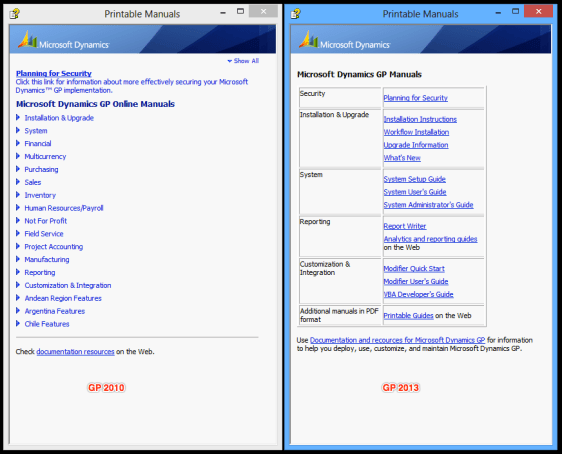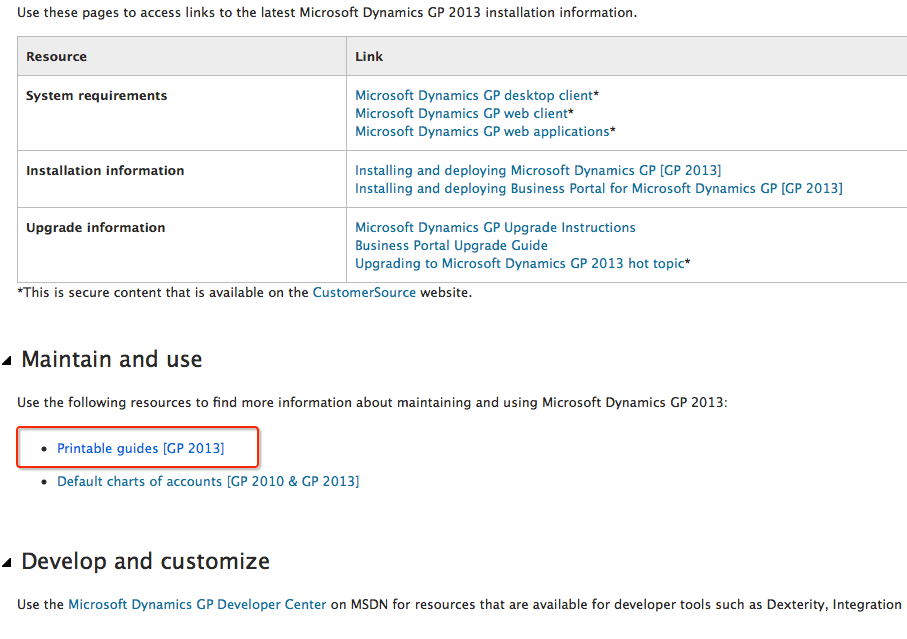This was my first book as a reviewer this year. I am in fact a bit too late to write about this gem. As like previous books, this book will remain treasured in my shelf.
The book I am talking about is: Microsoft Dynamics GP 2013 Cookbook.

The book is written by MVPs Ian Grieve and Mark Polino. They need no introduction. If you are a GP consultant or community member, you should be knowing them. Let’s jump into the review straightaway.
Anybody who would like to buy a book, nowadays, look at immediate benefit that they get from it. We are no more disconnected. For any issue, we have a possible solution lying out there, you just need to reach it. Google it, Bing it (like how Ballmer say), email your peers, tweet it, register your question on relevant forum and you have experts who are happy to volunteer and guide you through your issue.
I am especially proud of my Dynamics GP Community, where almost all the times you won’t be left dissatisfied. You have a question, ask the community and rest assured that somebody would take that extra effort and get you through.
In such an age of unlimited guidance and resources, what makes this book a “GO GET IT” book? Apart from the authors who have got tons of experience and expertise collectively, content of this book is telling for us to treasure a copy.
This book is structured as follows:
- Chapter 1: Personalising Dynamics GP
- Chapter 2: New in Dynamics GP 2013
- Chapter 3: Organising Dynamics GP
- Chapter 4: Automating Dynamics GP
- Chapter 5: Harnessing the Power of SmartLists
- Chapter 6: Connecting Dynamics GP to Microsoft Office 2013
- Chapter 7: Exposing Hidden Features in Dynamics GP
- Chapter 8: Improving Dynamics GP with Hacks
- Chapter 9: Preventing Errors in Dynamics GP
- Chapter 10: Maintaining Dynamics GP
- Chapter 11: Extending Dynamics GP with the Support Debugging Tool
- Chapter 12: Extending Dynamics GP with Professional Services Tools Library
Chapter 1 discusses about how to personalise GP. You have so many ways to personalise your accounting system. There is no one standard way to do that. But with GP, there is a specific set of standard tweaks that will come in handy. I am not touching any single tweak here in my review. No spoilers. If you are a GP consultant already and know something (or more) about GP, you would still won’t go empty handed.
Chapter 2 discusses about what’s new in Dynamics GP 2013. This book is basically a Second Edition to the book Microsoft Dynamics GP 2010 Cookbook written by Mark. Apparently, a followup book like this should discuss about new features compared to old version of GP. This chapter does that precisely. The difficulty in writing a cookbook is to choose recipes that are interesting, appealing and significant to a user. With loads of new features in GP 2013, this chapter picks recipes that will surely be appealing and significant. These are standard ones required by most of the customers.
Chapter 3 discusses about how to organise GP. An accounting system is no small thing. They are big, confusing at times and scattered in terms of accessibility. 100% success of an ERP system is achieved only when we gain users’ confidence. This chapter gives us some recipes to organise GP and thereby gaining more confidence in using it. A simple thing like “User Defined Fields” can give more clarity to either a transaction or a master record. This chapter is full of such simple yet effective recipes.
Chapter 4 discusses about automating certain processes in GP. Time is precious to anyone. Especially when it comes to business, seconds matter. I have heard from lot of frustrated users that their ERP system does not help them do things faster enough. This chapter brings us some recipes that will help a user perform quicker and save time. Recipes range from manual process to totally automated process.
Chapter 5 discusses about SmartList and how it can be used efficiently. I have mentioned several times at many places that SmartList is the best tool to see your data and analyse it. You can do wonders with SmartList. And being a dedicated chapter on SmartList, this one talks about how to bend your SmartList to better extent and get what you want from it.
Chapter 6 discusses about connecting GP to Office 2013. One of the many reasons Microsoft talk about having Dynamics GP as our ERP is it’s interoperability with MS Office. From Letter Writing Assistant to Excel Reports, GP can talk seamlessly to two of the most productive tools in MS Office; Word and Excel. By end of this chapter, you should be well versed with GP data analysis.
Chapter 7 discusses about some (among many) hidden features in GP which can be so useful in tuning GP. Why are these hidden? Are they not visible to users? Not in that context. It’s hidden because it’s there all these times, but not being stressed upon. We won’t know how important they are till we actually use it. This chapter explains these features in it’s precise context so you know their exact importance. There are many such features in GP. I wish we would get to see a Third Edition Cookbook soon from Mark & Ian.
Chapter 8 discusses about improving GP with hacks. No no, not literal hacking. GP is secure and nobody can *hack* it as it is. When we talk about GP hacks, we are basically talking about how to get *into* GP and make it more efficient. Read this chapter to learn more about this. I am not going to discuss even a single recipe here. No spoilers. But trust me, this chapter gives you some best hacks to make GP smart and efficient.
Chapter 9 discusses about preventing errors in GP. That’s a nice chapter. Resolving errors is one way of addressing issues. Preventing some of the common errors is totally the smartest way of addressing things. You don’t let issues come to you. Anticipate them and kill them well before they arise. You can save a lot of support fees, believe me. More than anything, less number of error messages in GP means more confident and relieved users are. I again insist on this; if you want your GP implementation to be 100% successful, you MUST gain users’ confidence in GP.
Chapter 10 discusses about maintaining GP. GP is just another software and like all others, it requires periodical maintenance too. From taking necessary backups, to performing SQL DB tuning, to troubleshoot issues without much disturbance to users, maintaining GP is very important. This chapter explains some recipes to handle many such situations.
Chapter 11 discusses about Support Debugging Tool (SDT). Developed by David Musgrave and his team, this tool is a consultant’s Swiss Army Knife. Learn more about this tool on the link provided in the beginning. This chapter, though, summarises some important usages of this tool and how it extends GP’s functionality.
Chapter 12 discusses about Professional Services Tools Library (PSTL). From simple requirement such as changing a customer ID or vendor ID to complex requirement such as duplicating a company’s data, PSTL addresses all. This chapter focusses mainly on those which are day-to-day requirement.
I mentioned exact same words in my previous two reviews. And I am not going to shy away to write same words here: Ian and Mark have put their sincere and precious efforts in writing this book. More than writing a book, it’s the intention to share their experience and expertise with all of us. A book from them is surely going to be useful without doubt.
Go for it. Get one copy and taste their experience. It’s surely going to make a world of difference in the way you interact with an amazing product, that is Dynamics GP. Those who wish to buy this book can do so by clicking on the link provided at the beginning of this review OR by clicking on the book logo.
To the authors, Ian & Mark: Ian, I had told you (in the month of June if I remember correctly) that I would be writing about this book. I could not do that till this day. I hope you would forgive me for that delay :-). Brilliantly written book. I am using many recipes from this book, so I know at first hand how useful this book is for us, consultants.
Mark, we all owe you a lot. What more could I say! This book, especially, has become my reference guide from the time I got it; honestly speaking.
I am just hoping to see another Cookbook soon; this book is simply not enough. 🙂




